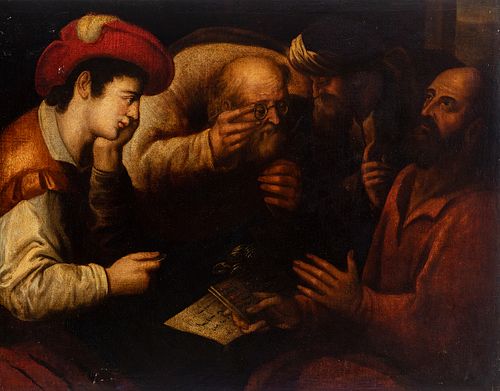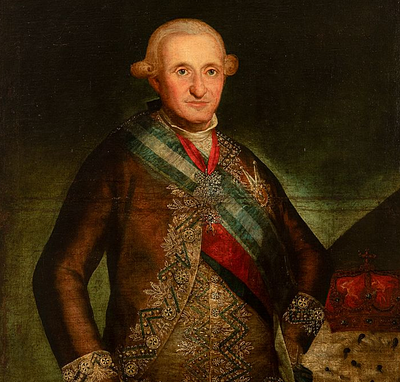Italian school; 17th century. "San Mateo's vocation". Oil on canvas. Relined.
Lot 22
About Seller
Setdart Auction House
Carrer Aragó 346
Barcelona
Spain
Setdart Subastas was born in 2004 and is currently the first online art auction in Spain with solidity, prestige and reliability guaranteed by our more than 60,000 users. Setdart has a young, dynamic and enterprising team ready to successfully manage the purchase and sale of art works through custom...Read more
Estimate:
EUR€3,000 - EUR€4,000
$3,092.78 - $4,123.71
Absentee vs Live bid
Two ways to bid:
- Leave a max absentee bid and the platform will bid on your behalf up to your maximum bid during the live auction.
- Bid live during the auction and your bids will be submitted real-time to the auctioneer.
Bid Increments
| Price | Bid Increment |
|---|---|
| EUR€0 | EUR€10 |
| EUR€200 | EUR€25 |
| EUR€500 | EUR€50 |
| EUR€1,000 | EUR€100 |
| EUR€3,000 | EUR€200 |
| EUR€5,000 | EUR€500 |
| EUR€10,000 | EUR€1,000 |
| EUR€20,000 | EUR€2,000 |
| EUR€50,000 | EUR€5,000 |
About Auction
By Setdart Auction House
Sep 22, 2021
Set Reminder
2021-09-22 09:30:00
2021-09-22 09:30:00
America/New_York
Bidsquare
Bidsquare : 22nd September - ARAS JÁUREGUI Private Collection - Old Masters, 19th & 20th Century
https://www.bidsquare.com/auctions/setdart-auction-house/22nd-september---aras-j-uregui-private-collection---old-masters-19th-20th-century-7427
ARAS JÁUREGUI Private Collection - Old Masters, 19th & 20th Century Setdart Auction House sofia@setdart.com
ARAS JÁUREGUI Private Collection - Old Masters, 19th & 20th Century Setdart Auction House sofia@setdart.com
- Lot Description
Italian school; 17th century. "San Mateo's vocation". Oil on canvas. Relined. It presents repainting and restorations. Measurements: 65,5 x 81,5 cm. This work that seems to represent the interior of a tavern, where several men meet around a bet, has a religious background. The artist takes up the story told in the Gospel according to Matthew (Matthew 9:9): "Jesus saw a man named Matthew sitting at the customs house and said to him, 'Follow me,' and Matthew got up and followed him". In this work we see the moment before the appearance of Jesus, in which Matthew is collecting taxes. The saint is the bearded figure on the far right of the composition. This is not only because of his physical features, or because the other figures are looking at the papers he is holding in his hand, but also because of the gesture he is making, pointing to himself. This gesture indicates Saint Matthew's surprise when Christ turns towards him; in fact, it is a gesture that was also used by Caravaggio in his work on the same theme as the present one. The rest of the figures, who are of great monumentality, approach the table in a swirling manner, giving rise to a frieze-like composition of a centripetal character that gathers all its aesthetic force in the centre. This type of representation, in which a group of people gathered around a table, although not in this particular case, to chat and debate, was very popular as it reflected the evening customs of the time. Aesthetically, the work is based on the precepts developed by the northern Italian school, which was inspired by the use of classical compositions, easy for the viewer to read, the use of a monumental anatomy in which the large dimensions of the bodies in relation to the space stand out, and a precise drawing that plays a leading role in relation to colour. The most important representatives of this school were the Carraci family, whose work was highly appreciated at the time and whose paintings were sought after by the great personalities of the day.
- Shipping Info
-
In-house shipping available. Please inquire at admin@setdart.com.
-
- Buyer's Premium



 EUR
EUR CAD
CAD AUD
AUD GBP
GBP MXN
MXN HKD
HKD CNY
CNY MYR
MYR SEK
SEK SGD
SGD CHF
CHF THB
THB

















